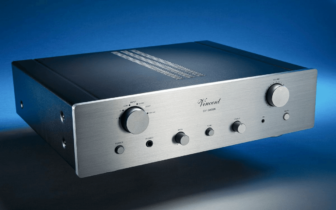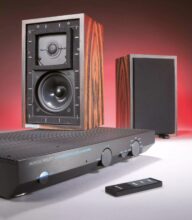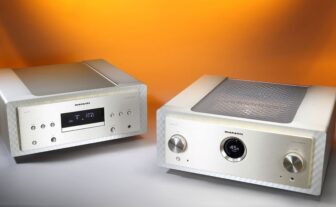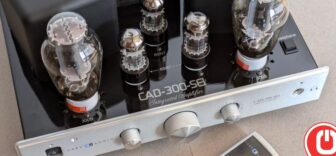Exposure 3510 Integrated Review
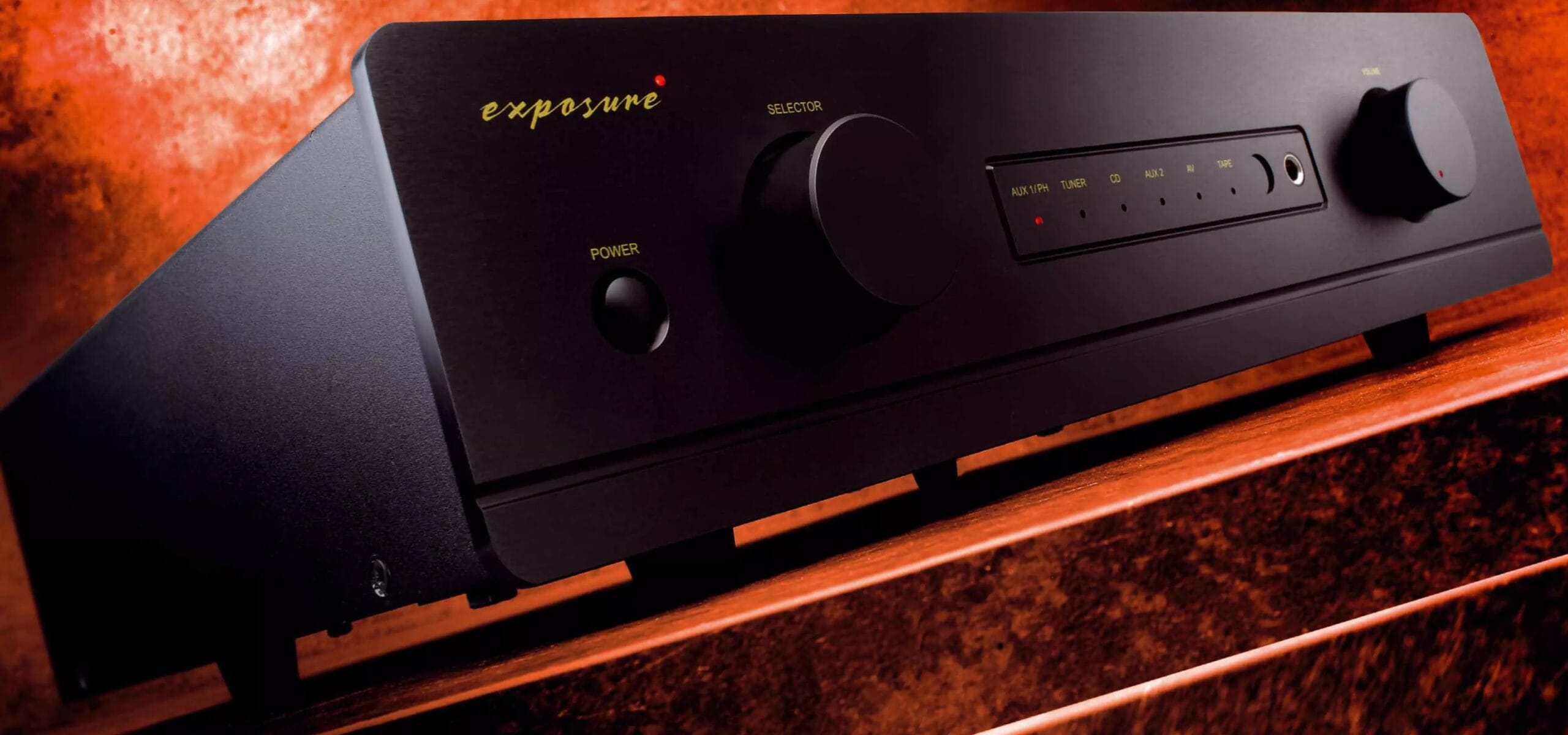
by Holger Barske
Background
I won’t deny that I received tips from several sources. Sometimes I complain that we barely have any remotely affordable devices in our collection and I’m forced to conduct almost every listening test using rather exotic equipment. Sure, that’s fun, but sometimes the practical relevance gets lost along the way. How about a moderately priced, robust integrated amplifier that can drive pretty much any speaker, that you don’t have to treat like it’s fragile, that always does its job everywhere, and on top of that sounds good?
Such a pleasantly pragmatic device, so say the usually well-informed, is the Exposure 3510 Integrated. It’s also reportedly upgradeable with a truly good phono preamp that’s anything but a mere token solution. At a price of USD 2,650. Plus USD 300 for one of the two phono options (MM/MC).
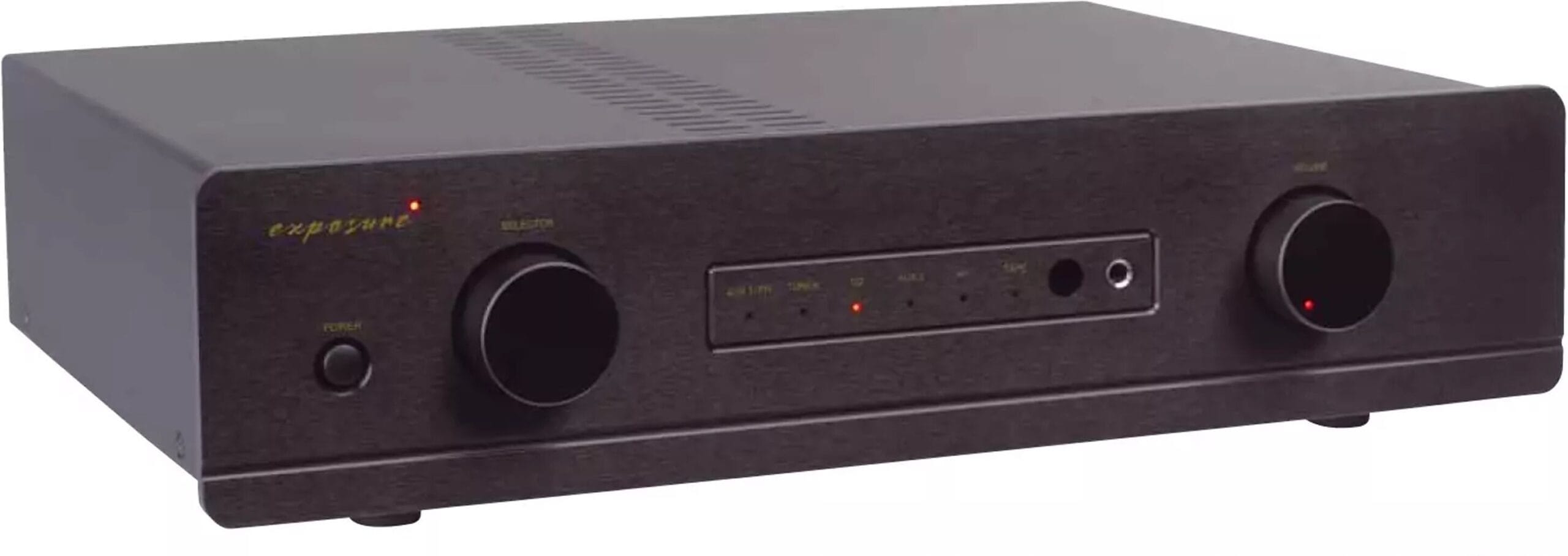
The British manufacturer Exposure has been building such delightfully practical products since 1974. Anyone looking to decorate their living room with a visually exciting eyecatcher will probably not be happy with the 3510 Integrated – the unit looks as straightforward as the blueprint for practically every 1980s integrated amp: one knob on the left, one knob on the right, a couple of small details in the middle – done. The “groove” running across the sturdy aluminum front almost counts as a visual highlight. But that’s probably exactly how it should be: more substance than flash is the guiding principle. You get your first impression of that “substance” when you pick up the unit. The “Integrated” weighs a solid twelve kilograms – that suggests a robust power supply and a decent amount of power. By the way, it’s labeled “Integrated” because the 3510 series also includes a preamp called the “3510 Pre,” as well as a stereo power amp and monoblocks.
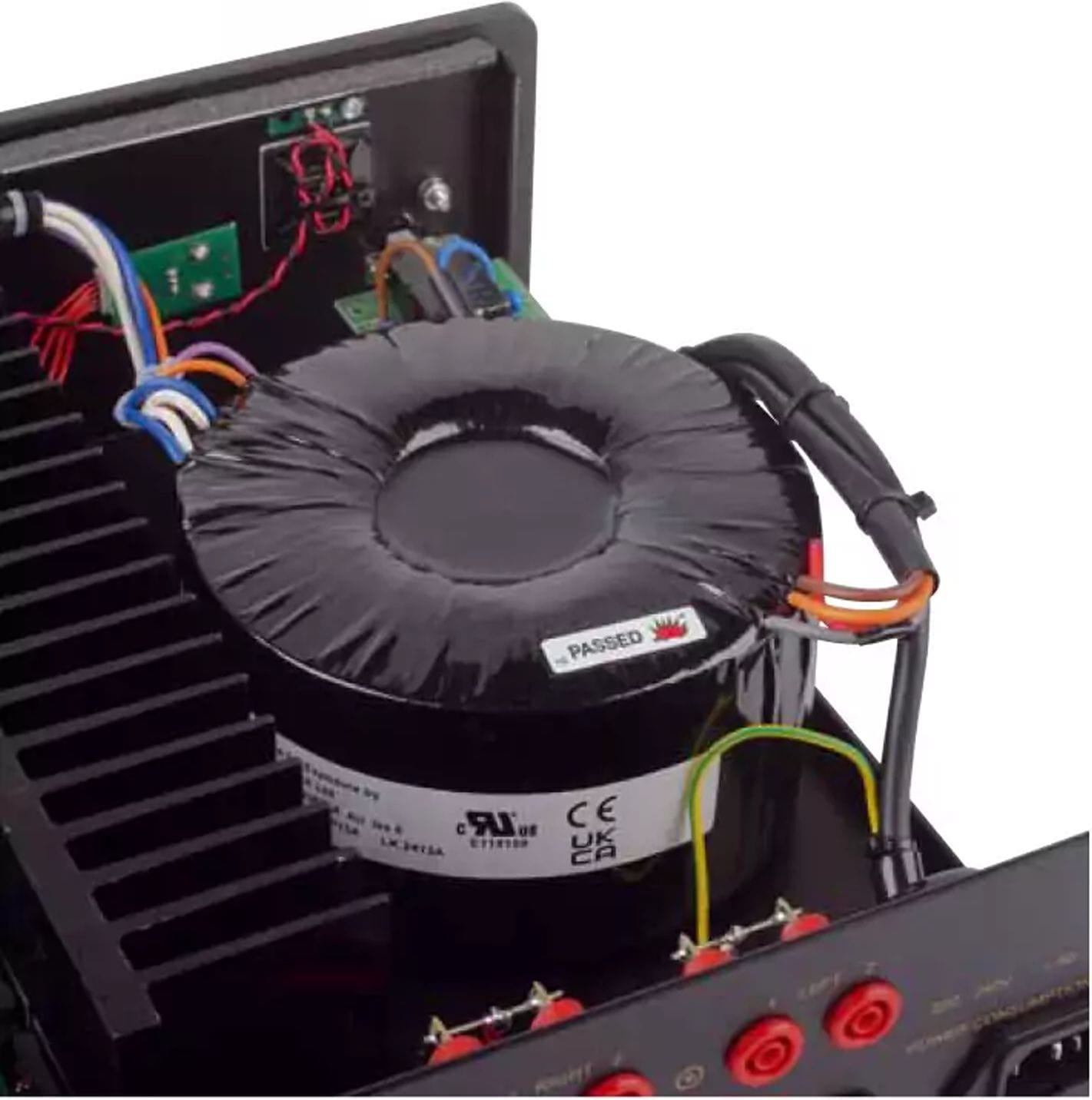
Features
A look at the back reveals plenty of connection options: five line-level inputs, one of which can be converted into phono, a full tape loop, and two parallel preamp outputs. There are also connections for two (not individually switchable) speaker pairs, in the Hirschmann lab terminal format I’m very familiar with and fond of – I use these for all my DIY projects. You can only plug in banana connectors here, which I find perfectly fine.
You turn the unit on with a proper mains switch on the front, as it should be. It applies the impressive toroidal transformer to the mains voltage without any inrush current limiting. We had no problems with that, but I won’t exclude the possibility that more sensitive household wiring might occasionally respond by tripping a breaker. The knob on the left cycles through the inputs, which are switched by robust, clicking relays. Pleasant little red LEDs display the selected input, show the operational status, and indicate the position of the volume control. It’s a very well-executed and subtle way of communicating with the user.
We also appreciate the 6.3 mm headphone jack and a receiver for the standard remote. Under the aluminum lid lies a typically British integrated amp layout. On the left is the aforementioned toroidal “monster,” the large heat sink runs from front to back in the middle. This arrangement helps the heat sink shield the amplification electronics from the transformer – a proven concept. Power is delivered by four potent bipolar transistors per channel, with the large reservoir capacitors located very close by – great, optimally done. The amplifier circuit is built with discrete single transistors, certainly no disadvantage. In the center of the main board of our test unit sits the MC phono module. This is indeed a wonderful piece that’s been given a lot of attention.
The first amplifier stage consists of a whole series of tiny parallel SMD transistors, which helps reduce noise. The presumably final stage apparently uses integrated operational amplifiers, but there’s nothing inherently bad about that. The module’s gain can be switched in two stages via a jumper, and with three more jumpers, you can set input impedances between about 100 ohms and 1.5 kiloohms. That’s not lavish or super-comfortable, but it works. And otherwise? The volume is adjusted by one of the famous motorized ALPS pots from the Japanese specialist, a thoroughly robust solution. A well thought-out, consistently executed device – everything’s been done right.
Measurement Commentary
In the lab, the Exposure also delivers a convincing performance. The unit is not extraordinarily wide-band; from 20 kilohertz onward, the frequency response takes a slight downward trend. A direct comparison with the phono frequency response reveals that the MC module has been given a subtle subsonic filter. The unit is pleasing with a line-level signal-to-noise ratio of almost 80 dB(A), with channel separation only slightly lower. That applies to operation at eight and four ohms. Distortion at one watt into eight or four ohms is a minimal 0.022 percent. Power output is noteworthy: around 177 watts at eight ohms and 190 watts at four ohms, each at a maximum of 0.7 percent THD. Quiescent power consumption is a moderate 37.7 watts.
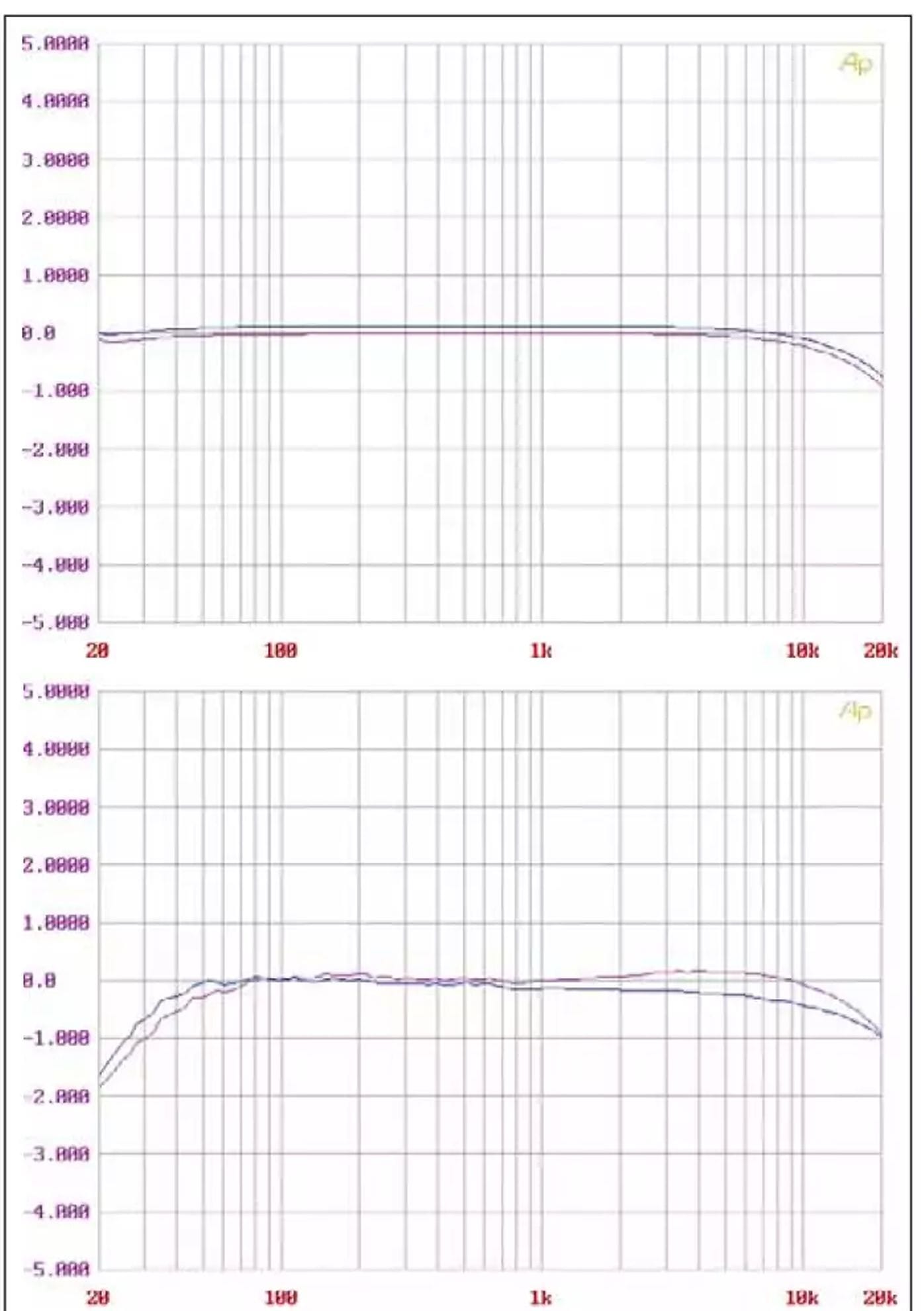
Sound Quality
The question of which speakers work best with the 3510 is quite simple: the ones you like most. I even conducted a somewhat quirky experiment and hooked up the decidedly demanding Wilson The Watt/Puppy to the Brit – those speakers cost about twenty times as much as the amp. And it worked far better than expected: the Wilson’s impressive low-end capabilities come across very convincingly here with punch and extension. Not quite with the razor-sharp precision of the D’Agostino Progression Integrated, which drove these exceptional American speakers so masterfully, but almost. I find that quite remarkable. A more realistic pairing was the Exposure combined with the excellent Epos ES-14N.
Exactly the same sort of straightforward yet solid product as the amplifier – they got along brilliantly. Both share a knack for punchy, expressive performance. Let’s spend a while on the excellently produced Transrotor sampler “Favourites,” for example. John Scofield’s “Do Like Eddie” sounds notably spacious, with a very rhythmic drum track and plenty of air between guitar and keyboard. An audiophile highlight of the highest order, conveyed superbly by this combo. Musically more relaxed but no less convincing: “Seven Days Of Falling” by the unforgettable Esbjörn Svensson Trio.
Dynamics are also the key here. Exposure and Epos deliver an extremely emotional performance, demonstrating excellent intuition for the subtle nuances of the recording, while maintaining – and here the amplifier plays a major role – an impressive composure that first and foremost shows in the quality of the double bass reproduction in direct contrast to the buttery-soft piano touches of the maestro, topped with an almost ethereal quality at the upper end of the spectrum.
All that works wonderfully with the upgrade phono module, which excels with a brash and direct approach. The transformer-supported Unison Phono from this issue may sound just a shade more fluid and delicate, but it’s certainly not worlds apart. After listening to all four sides of My Sleeping Karma’s marvelous live album “Mela Ananda,” it’s obvious: This is the amplifier I’ve been looking for all along. And I’m quite sure I’m not the only one.
Exposure 3510 Integrated Verdict
Visually unspectacular, sonically the exact opposite: The Exposure 3510 is a powerful jack-of-all-trades that perfectly combines dynamic and refined qualities, and it also impresses with an excellent phono option.
Exposure 3510 Integrated Specs
•Price from approx. USD 2,650
•Warranty 2 years
•WxHxD 440 x 115 x 300 mm
• Weight: approx. 12 kg
System Partners
Turntables: Transrotor Alto TMD / TRA 9 / Transrotor Figaro
Step-Up Transformer: Silvercore
Speakers: Epos ES-14N, Wilson Audio The Watt/Puppy, Klang & Ton Nada
Opponents:
Integrated Amplifiers: Soulnote A-3, D’Agostino Progression Integrated
Phono Preamps: Unison Simply Phono, Played Recordings
V/A
Transrotor Favorites
My Sleeping Karma
Mela Ananda Live
Linkin Park
From Zero
John Coltrane
Ballads
Surprising! New Exposure 3510 Amplifier Review
After awarding the Exposure 2510 Amplifier of the Year 2021, can the new Exposure 3510 reach the same heights. Link to ...



